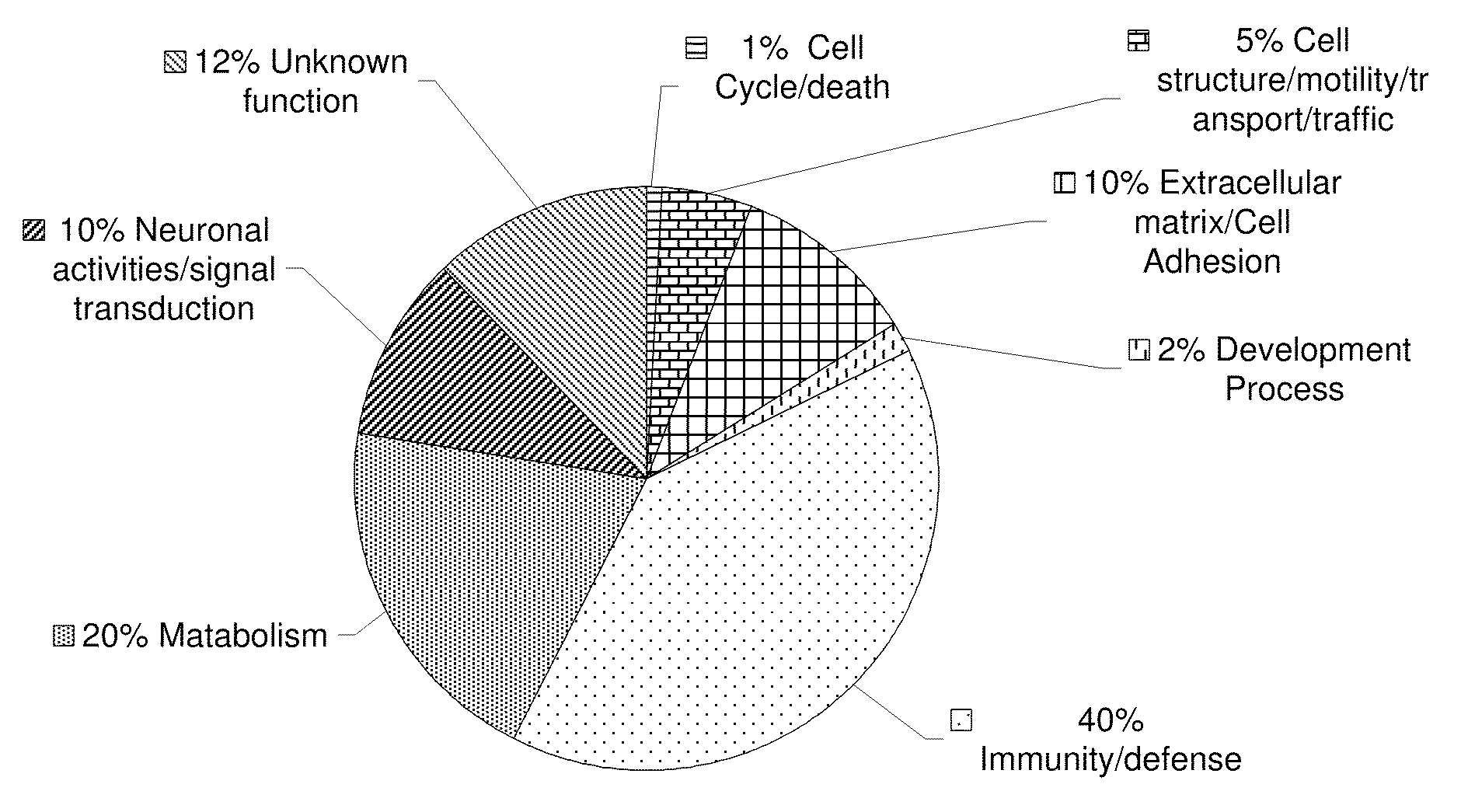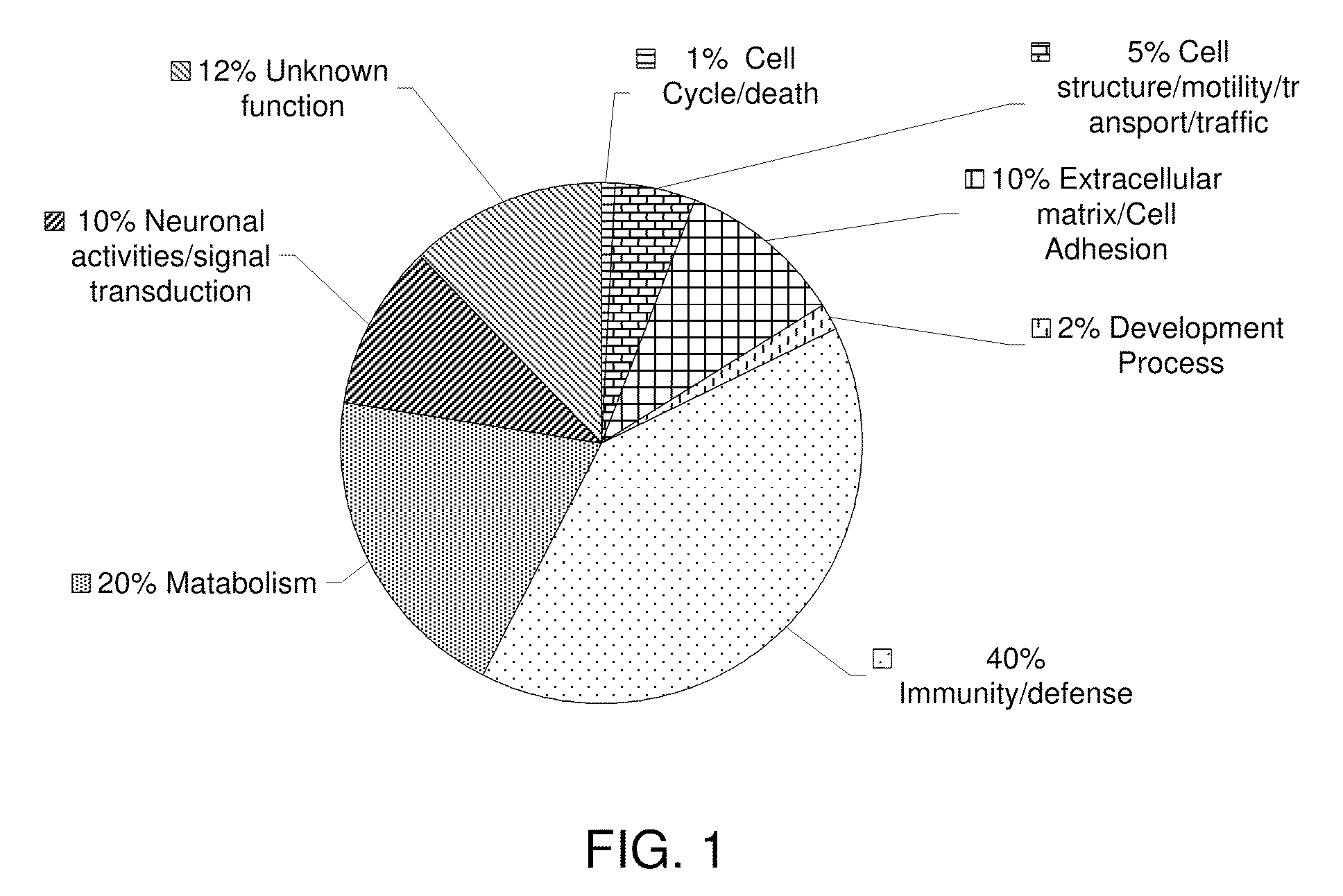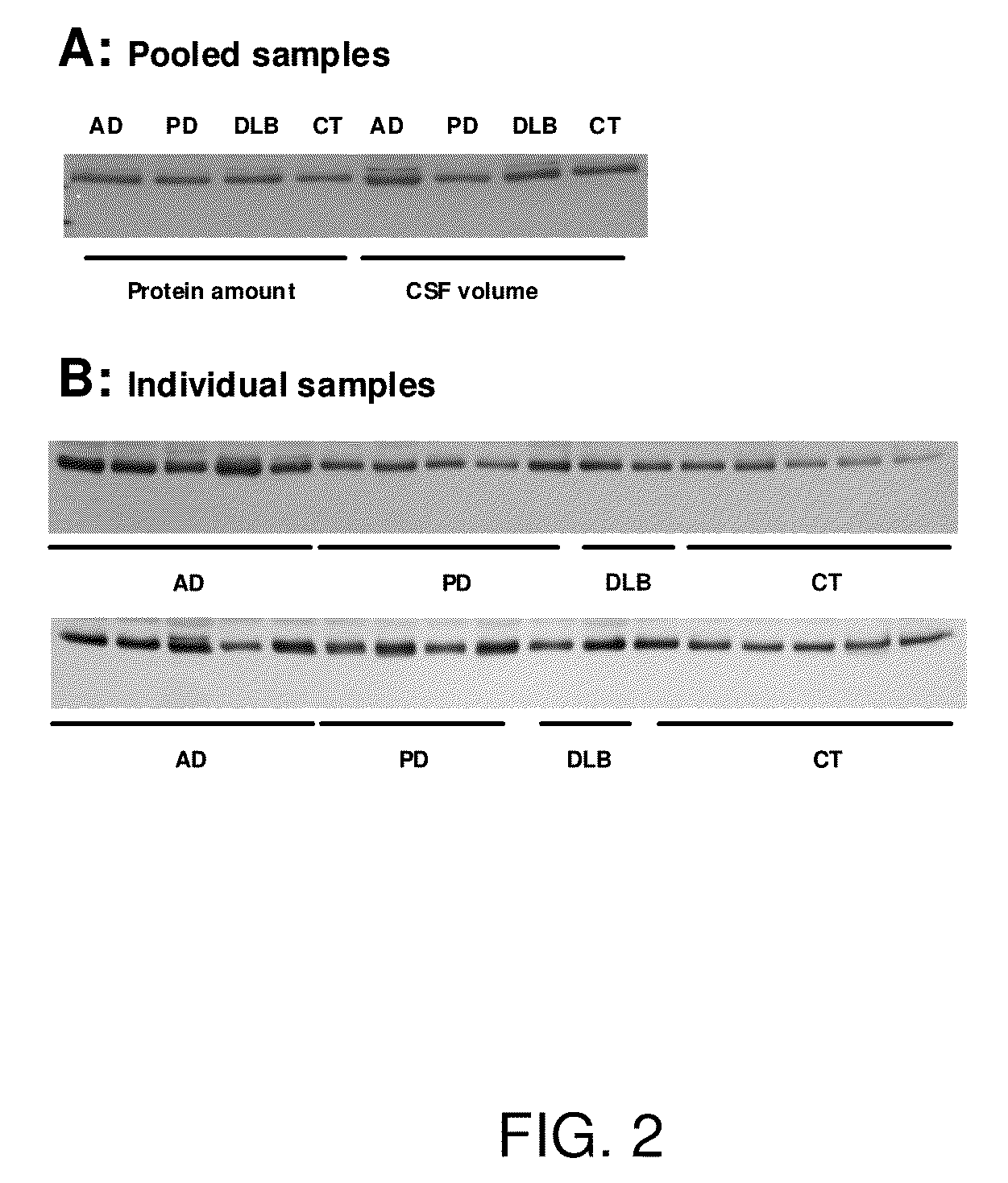Biomarkers for neurodegenerative disorders
a neurodegenerative disorder and biomarker technology, applied in the field of biomarkers for neurodegenerative disorders, can solve the problems of unsatisfactory diagnosis based on these approaches, inability to make reasonable diagnosis with reasonable certainty, and no established diagnostic biomarkers can confirm ad, pd or dlb or monitor
- Summary
- Abstract
- Description
- Claims
- Application Information
AI Technical Summary
Problems solved by technology
Method used
Image
Examples
example 1
CSF Proteome
[0131]Using pooled, well characterized CSF samples and multidimensional peptide separation techniques, followed by 4700 TOF-TOF analysis, a total of 1,540 proteins were identified (FIGS. 6A-6T and FIGS. 7A-V). Of these, 804 were called single hits (FIGS. 7A-V). Single-hits refers to the fact that a protein is identified from the MS / MS spectrum of a single peptide and is therefore judged as being less reliably identified than those proteins identified with multiple peptide tandem mass spectra. Nonetheless, all protein identification was based on meeting the criteria of having at least one peptide whose individual score was above the 95% confidence interval threshold (p<0.05) and also identified as the top-ranked matching sequence for that spectrum. Furthermore, all proteins also had a probability of being more than 95% correct as determined by ProteinProphet.
[0132]When the list of identified proteins was compared to the previous analysis of human CSF, where close to 1,000...
example 2
Changes in CSF Proteome Associated with AD, PD, and DLB
[0136]Individual quantification of the identified peptides were based on the individual ratios from signature ion peak areas of the iTRAQ reagents tags of the identified peptides from AD, PD and DLB samples compared with the healthy individuals' signature ion peak areas. Peptide ratios from each protein were grouped and averaged together to give protein level modulations ratios for 1,520 identified proteins. Modulated proteins were found to be involved in several biological processes such as cellular metabolism, immunity and defense, signal transductions and neural activities, and synaptic transmissions. Some of these modulations exceeded two or three folds up or down. As the first step towards selecting candidate proteins for further study, changes with more than 50% increase or decrease were defined as significant. Changes that were less than 20% but less than 50% were defined as non-significant and ambiguous, respectively.
[01...
example 3
Confirmation of Candidate Protein Markers for Each Neurological Disease
[0138]As demonstrated by data presented in Table 2, the numbers, as well as the types of proteins identified changed significantly when the database was altered. Given that none of the current databases is complete, it is imperative to confirm candidate protein markers not only for their identifications but also for their quantifications as determined by proteomics with alternative means before extensively pursuing their utilities in clinical diagnosis. Currently, there is no high throughput method available for this purpose, so consequently, Western blot analysis was used achieve this goal. Several criteria were used in selecting candidate proteins for further confirmation, including: 1) proteins had to be identified by more than two unique peptides; 2) markers should be unique to each disease, i.e. a marker common to two diseases was not considered; 3) markers with known biological functions were preferred; 4) ...
PUM
 Login to View More
Login to View More Abstract
Description
Claims
Application Information
 Login to View More
Login to View More - R&D
- Intellectual Property
- Life Sciences
- Materials
- Tech Scout
- Unparalleled Data Quality
- Higher Quality Content
- 60% Fewer Hallucinations
Browse by: Latest US Patents, China's latest patents, Technical Efficacy Thesaurus, Application Domain, Technology Topic, Popular Technical Reports.
© 2025 PatSnap. All rights reserved.Legal|Privacy policy|Modern Slavery Act Transparency Statement|Sitemap|About US| Contact US: help@patsnap.com



